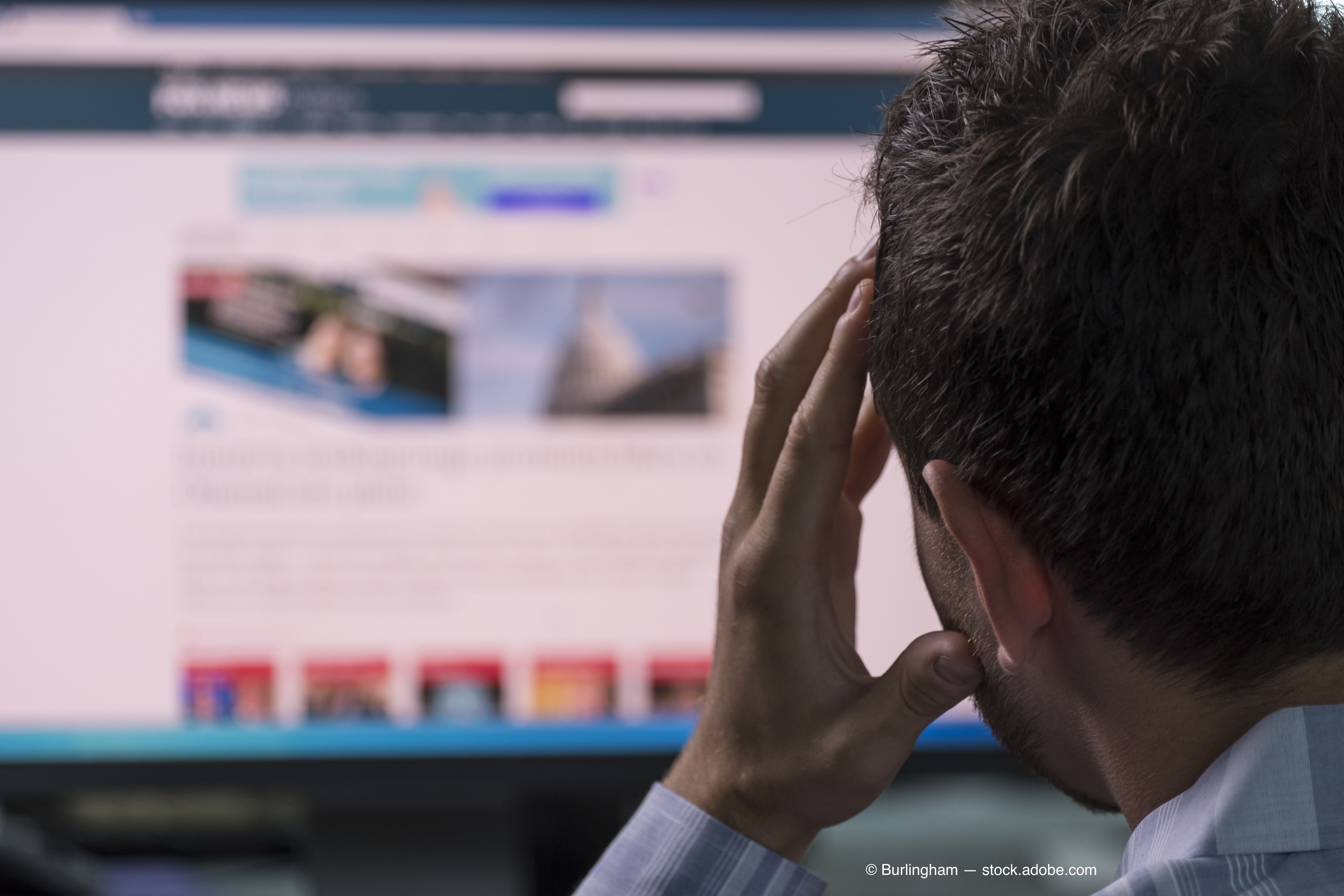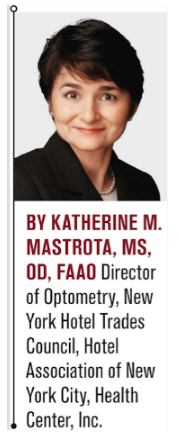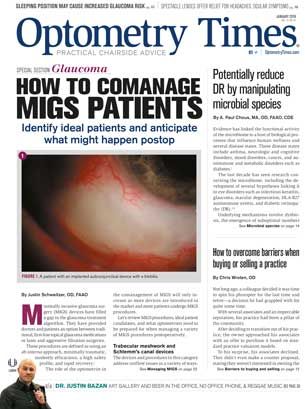How to recognize and manage digital eye strain


Digital eye strain (also referred to as computer vision syndrome [CVS], is a condition characterized by visual disturbance and/or ocular discomfort related to the use of digital devices.
As an emerging public health concern, digital eye strain results from a range of stresses on the ocular environment.
Previously by Dr. Mastrota: Hydradenitis suppurative masquerades as blepharitis
An estimated 50 to 90 percent of digital device users experience symptoms of digital eye strain. Studies suggest multiple factors are associated with CVS.1,2
Nationwide concern
Americans have reported experiencing the following symptoms associated with digital device use:3
• 32.4 percent report experiencing eye strain
• 27.2 percent report experiencing dry eyes
• 27.7 percent report experiencing headaches
• 27.9 percent report experiencing blurred vision
• 35 percent report experiencing neck and shoulder pain
Close to 80 percent of Americans report using digital devices-including TV-in the hour before going to sleep, with almost 55 percent in the first hour they are awake.
Similarly, American adults report their children experience the following after being exposed to two or more hours of screen time:3
• Headaches (8.8 percent)
• Neck/shoulder pain (5 percent)
• Eye strain, dry or irritated eyes (9.1 percent)
• Reduced attention span (15.2 percent)
• Poor behavior (13.3 percent)
• Irritability (13.5 percent)
Related: WellPoint offers 6 steps for handling digital eye strain
Addressing digital eye strain
A 2018 study investigated the influences of smartphone use on ocular symptoms, status of the tear film, and oxidative stress indices in the tears and at the ocular surface.4
Results found that smartphone use could not only aggravate subjective symptom scoring indices of dry eye but also induce tear film instability and oxidative stress indices in the tears and at the ocular surface.
Suggested management strategies for digital eye strain include:4
• Correcting refractive error, including astigmatism and presbyopia
• Managing vergence anomalies
• Managing accommodative anomalies
• Blinking exercises/training to maintain a normal blinking rate
• Lubricating eye drops to help alleviate dry eye-related symptoms and/or increasing ambient humidity with the use of a room humidifier or moisture-loss preventing glasses
• Prescribing spectacle color filters, especially blue light-absorbing filters
• Computer or gaming glasses with decentered optics (creating small amounts of base-in prism)
• Attention to work and recreational digital device ergonomics
I believe that the amount of time patients report using digital devices is well-underestimated.
Prevention
Depending on the cell phone manufacturer and operating system, a mobile phone may be equipped to monitor how much time the owner spends using the device, as is seen in the latest iPhone update.
Other manufacturers allow for programming downtime, setting locked time limits on applications for the individual or shared family users, and setting content blocking.
Related: Deconstructing the 20-20-20 Rule for digital eye strain
Prevention is the main strategy for management of digital eye strain. This includes ensuring an ergonomic work environment and visual hygiene practice through patient education.
Be a “dry eye hero” and share cell phone screen-time monitoring information with your patients so that they can be proactive participants in their ocular health.
References:
1. Coles-Brennan C, Sulley A, Young G. Management of digital eye strain. Clin Exp Optom. 2018 May 23.
2. Sheppard AL, Wolffsohn JS. Digital eye strain: prevalence, measurement and amelioration. BMJ Open Ophthalmol. 2018 Apr 16;3(1): e000146. eCollection 2018.
3. The Vision Council. Digital Eye Strain. Available at: https://www.thevisioncouncil.org/content/digital-eye-strain. Accessed 12/3/18.
4. Choi JH, Li Y, Kim SH, Jin R, Kim YH, Choi W, You C, Yoon KC. The influences of smartphone use on the status of the tear film and ocular surface. PLoS One. 2018 Oct 31;13(10): e0206541. doi: 10.1371/journal.pone.0206541.

Newsletter
Want more insights like this? Subscribe to Optometry Times and get clinical pearls and practice tips delivered straight to your inbox.